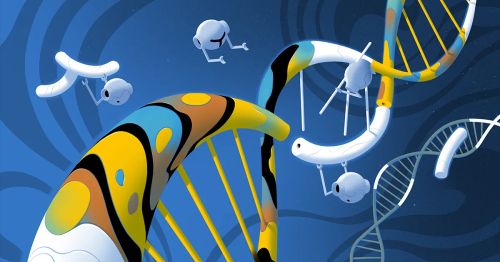How a DNA ‘Parasite’ May Have Fragmented Our Genes

How a DNA ‘Parasite’ May Have Fragmented Our Genes
5/1/2023
link
summary
This article explores the role of a DNA parasite called a transposon in fragmenting and rearranging our genes. Transposons are pieces of DNA that can move around within an organism's genome, sometimes causing disruptions in the genes they land in. The article discusses a study that suggests transposons may have played a significant role in the evolution of complex organisms, including humans. It explains how transposons can insert themselves into genes and cause them to be duplicated or rearranged, potentially leading to new genetic functions and variations. The article also discusses the potential implications of this research for understanding genetic diseases and how transposons may have shaped the evolution of diverse life forms.
tags
genetics ꞏ dna ꞏ genome ꞏ gene fragmentation ꞏ horizontal gene transfer ꞏ evolutionary biology ꞏ parasites ꞏ endosymbiosis ꞏ dna replication ꞏ molecular biology ꞏ transposable elements ꞏ mobile genetic elements ꞏ genomic rearrangement ꞏ genetic variation ꞏ genomic instability ꞏ genetic evolution ꞏ genetic diversity ꞏ dna sequencing ꞏ genetic adaptation ꞏ genetic mutation ꞏ evolution ꞏ genetic inheritance ꞏ gene expression ꞏ gene regulation ꞏ molecular evolution ꞏ horizontal transfer ꞏ dna repair ꞏ genetic recombination ꞏ genetic drift ꞏ gene function ꞏ gene fusion ꞏ gene duplication ꞏ gene loss ꞏ gene transfer ꞏ genetic integration ꞏ genetic organization ꞏ genetic structure ꞏ genome evolution ꞏ gene sequencing ꞏ dna analysis ꞏ genetic modification ꞏ gene mutation ꞏ genetic engineering ꞏ genetic manipulation ꞏ genomic analysis ꞏ genetic disorders